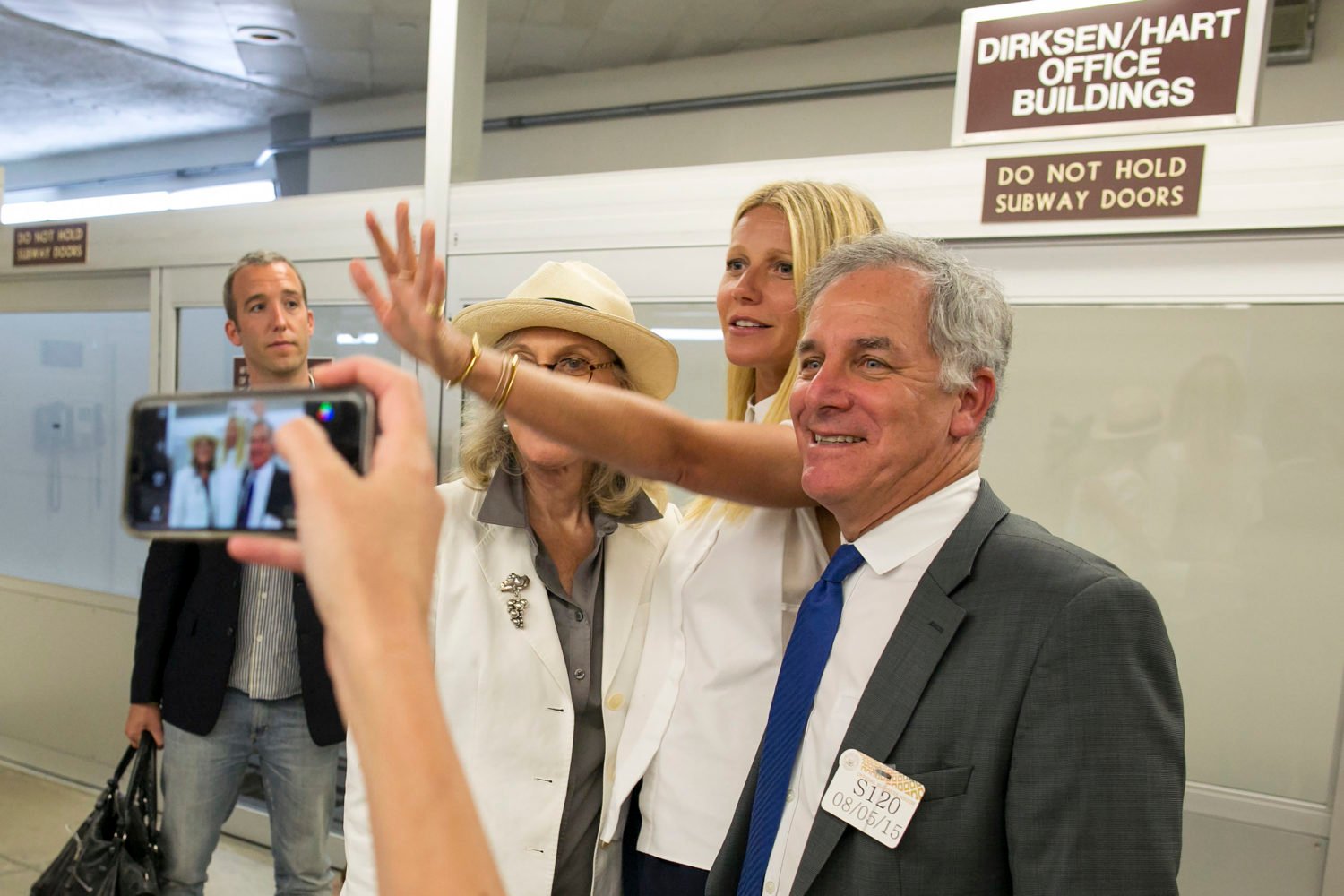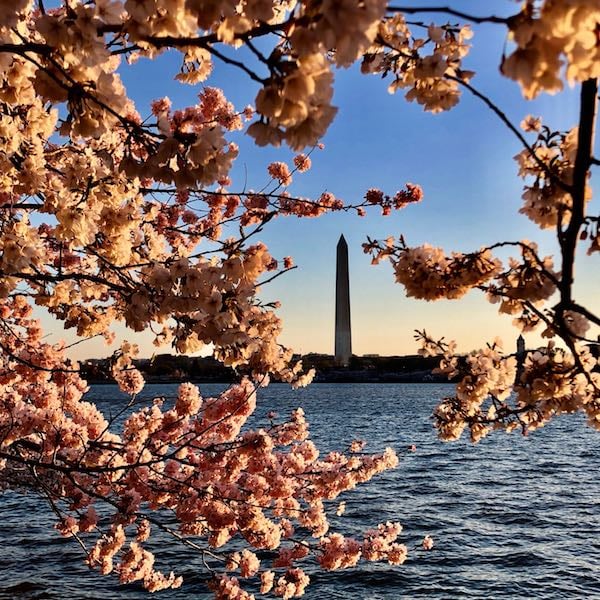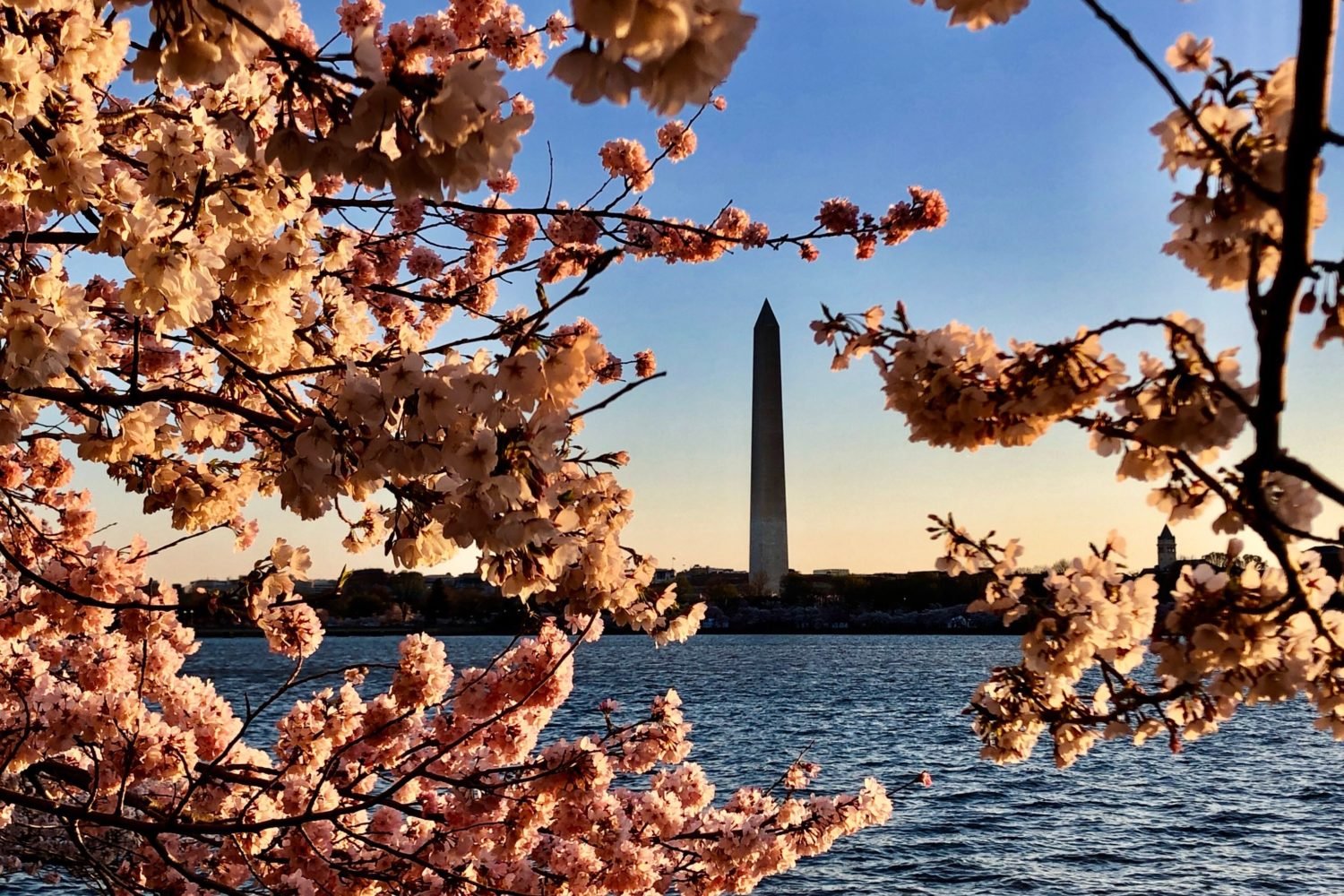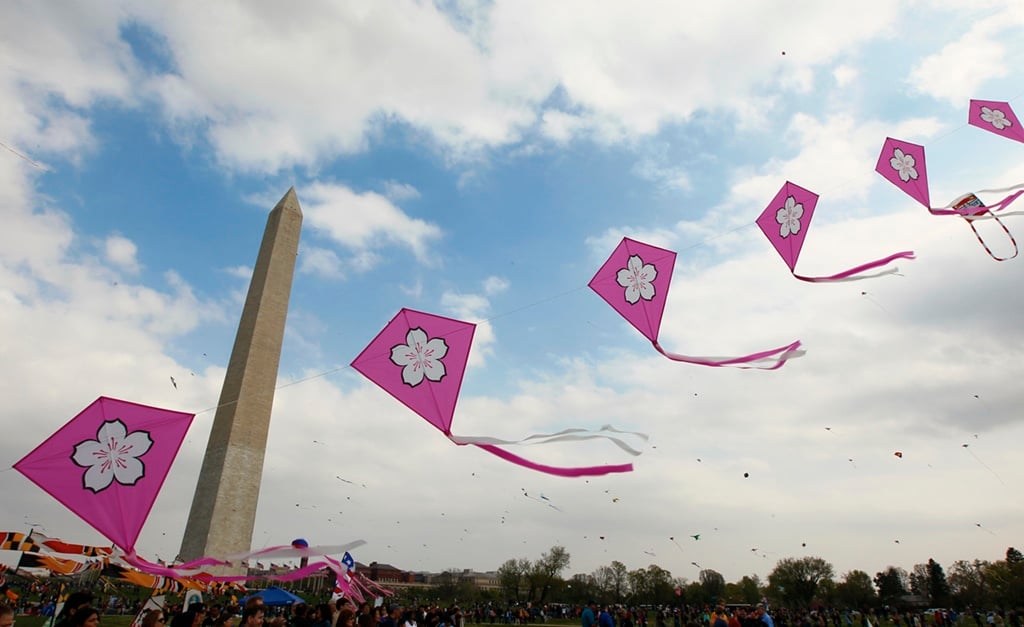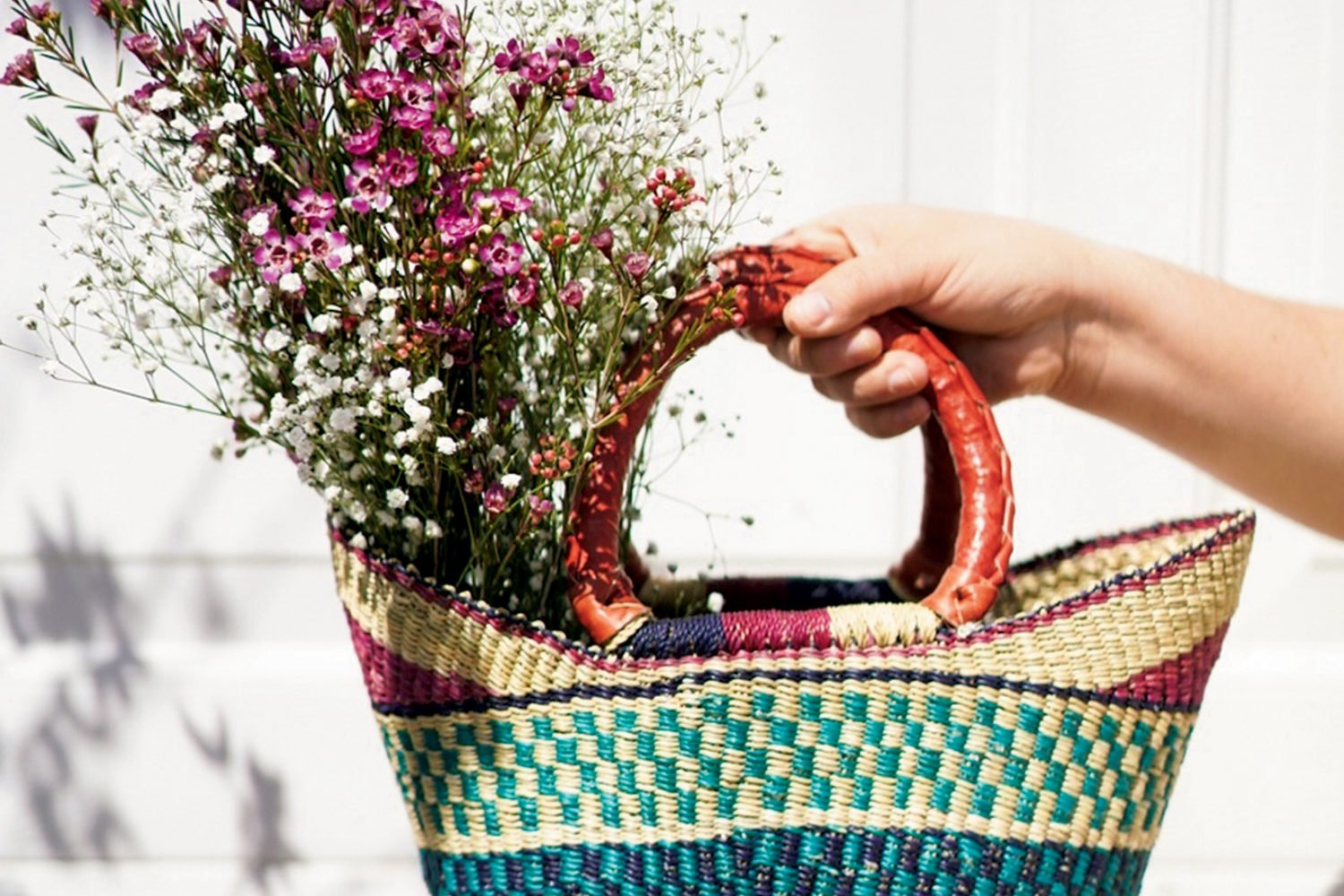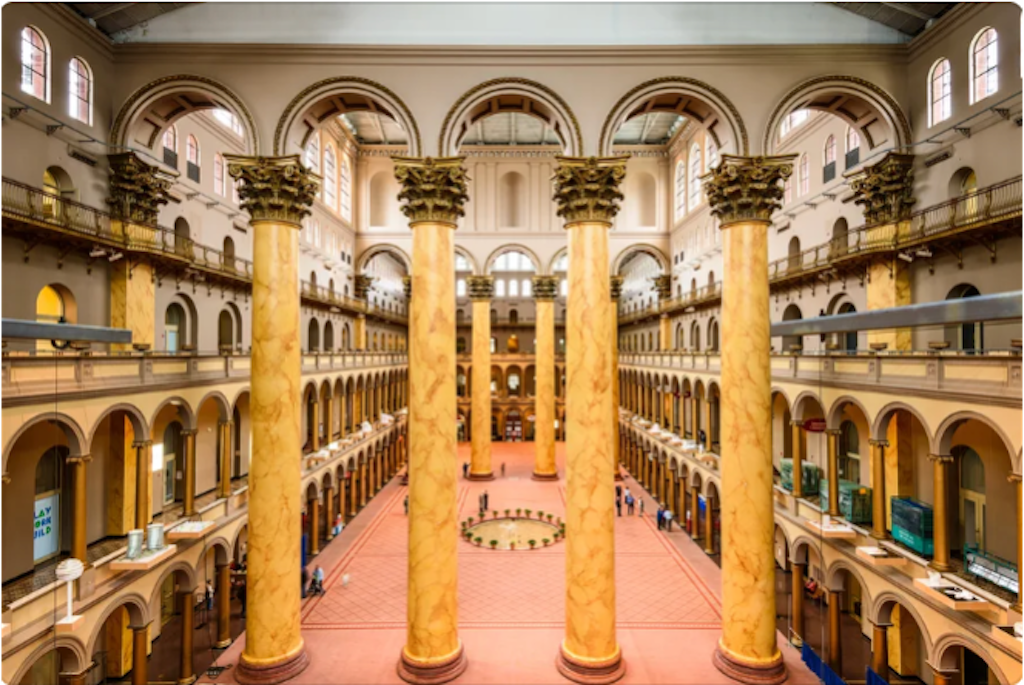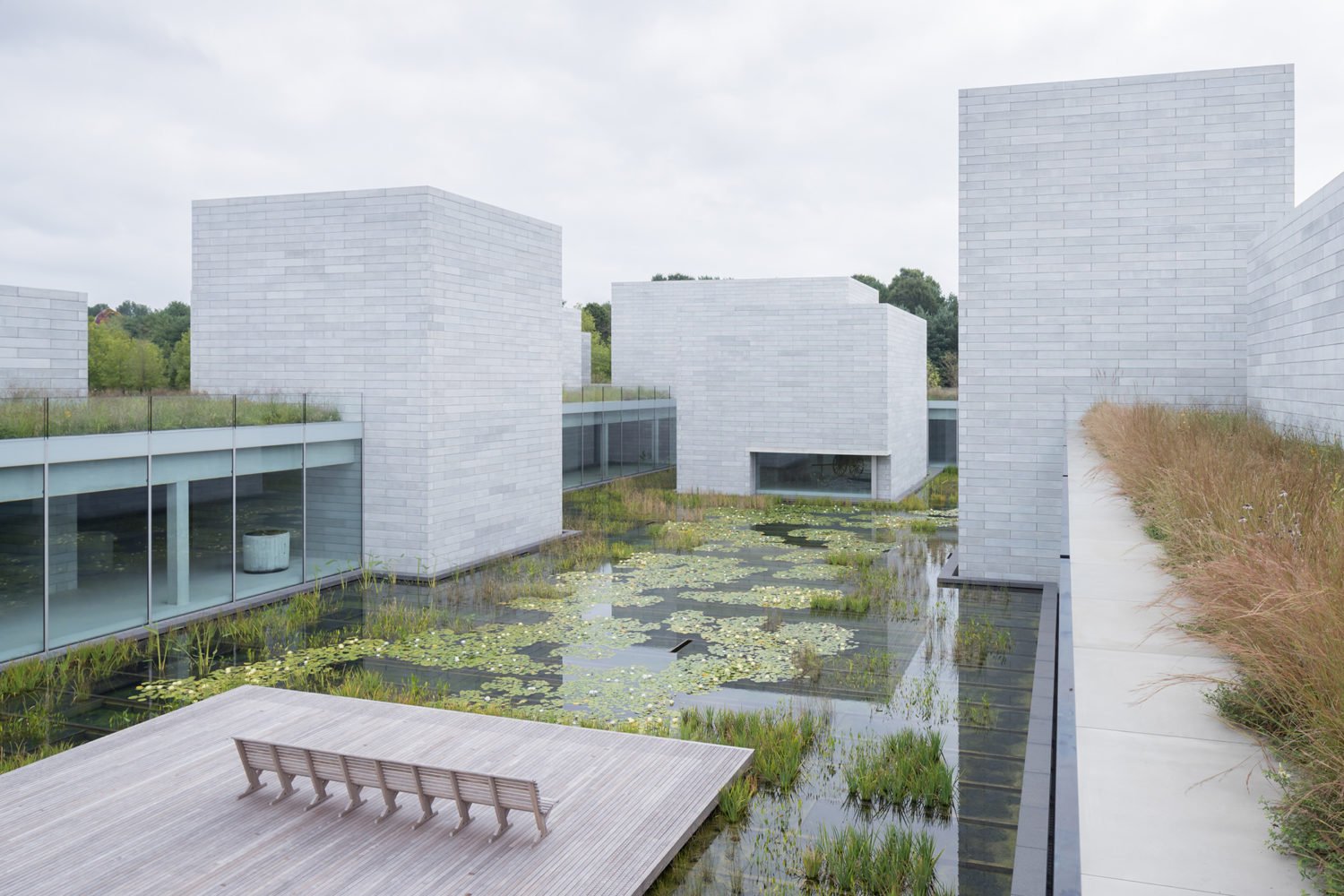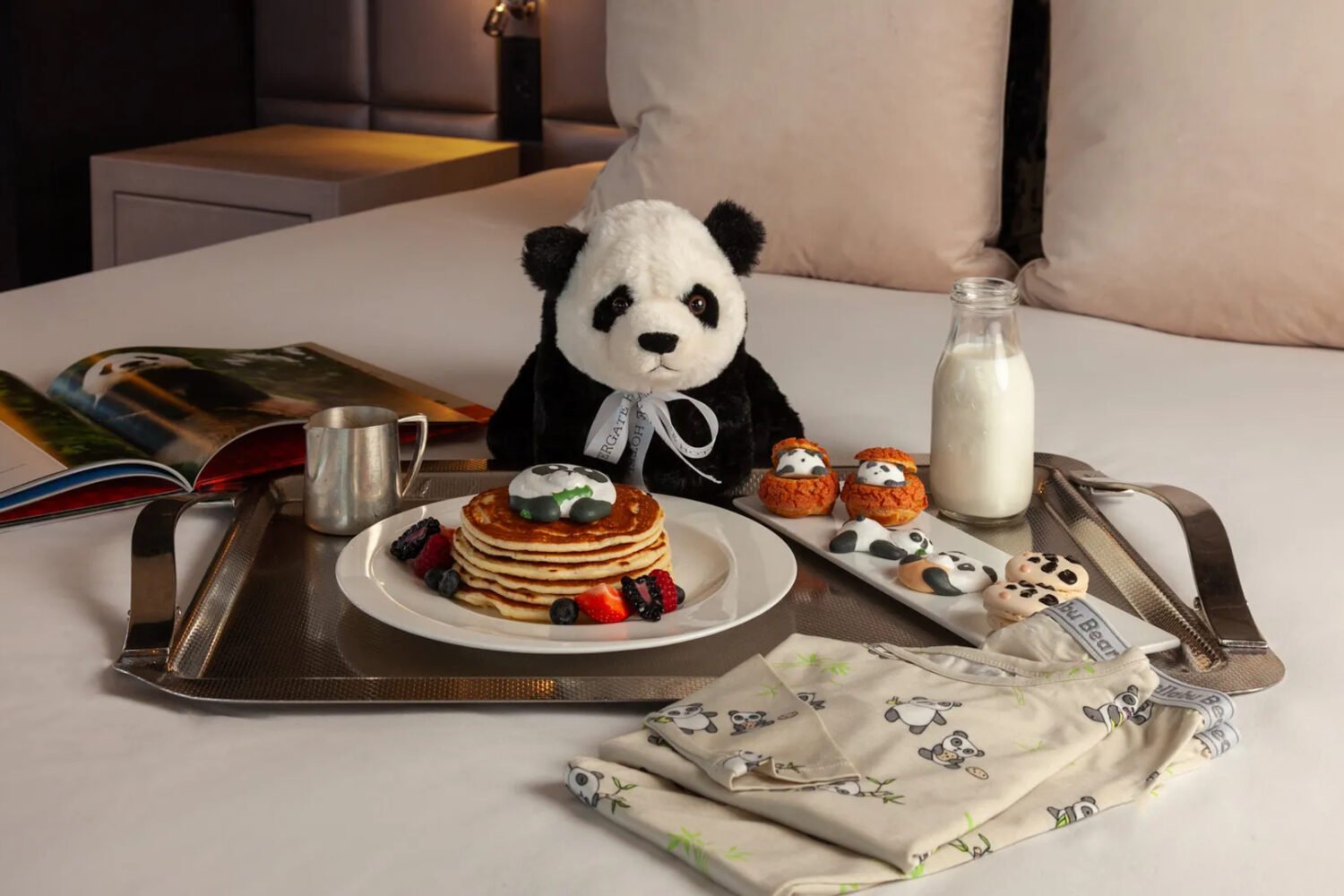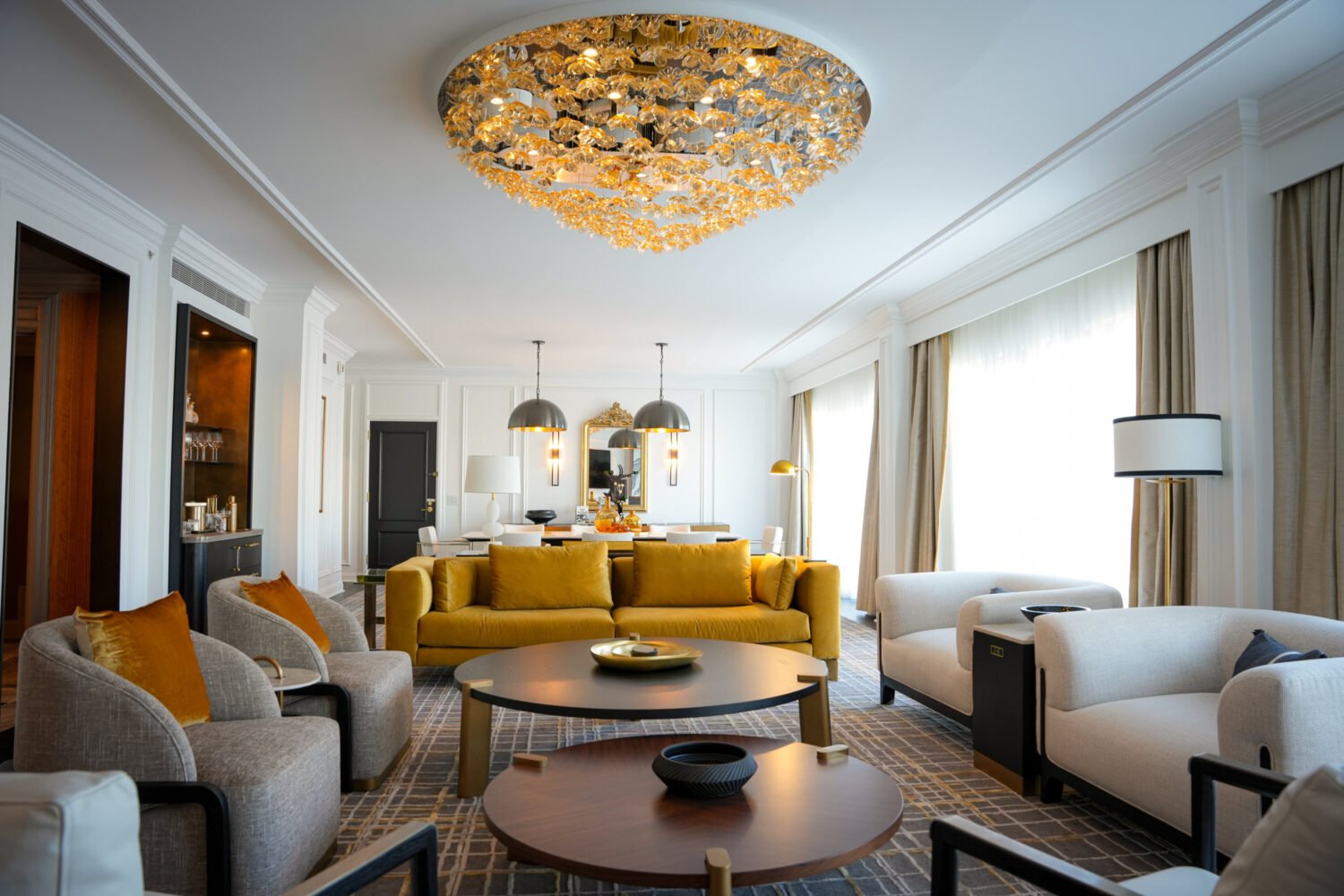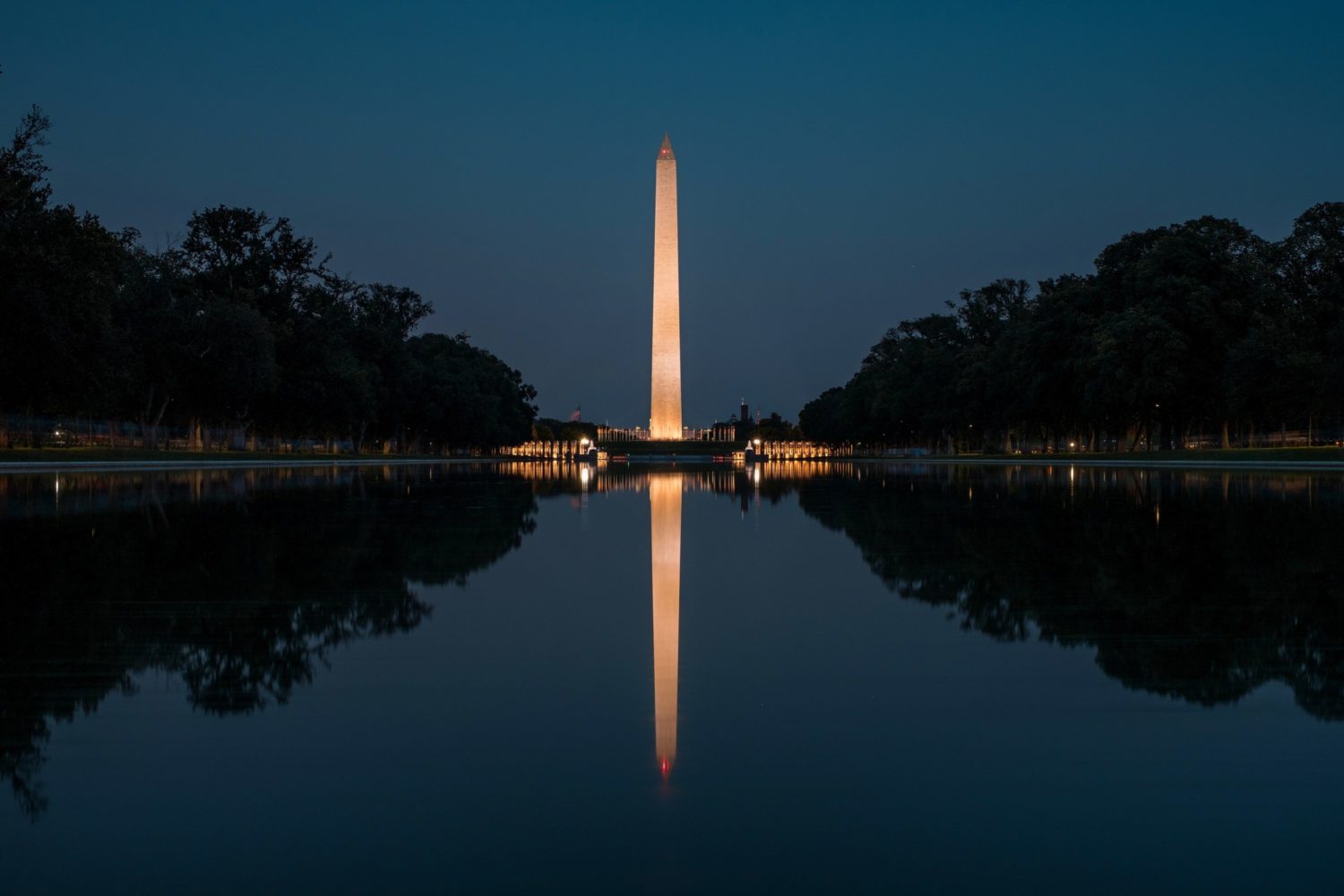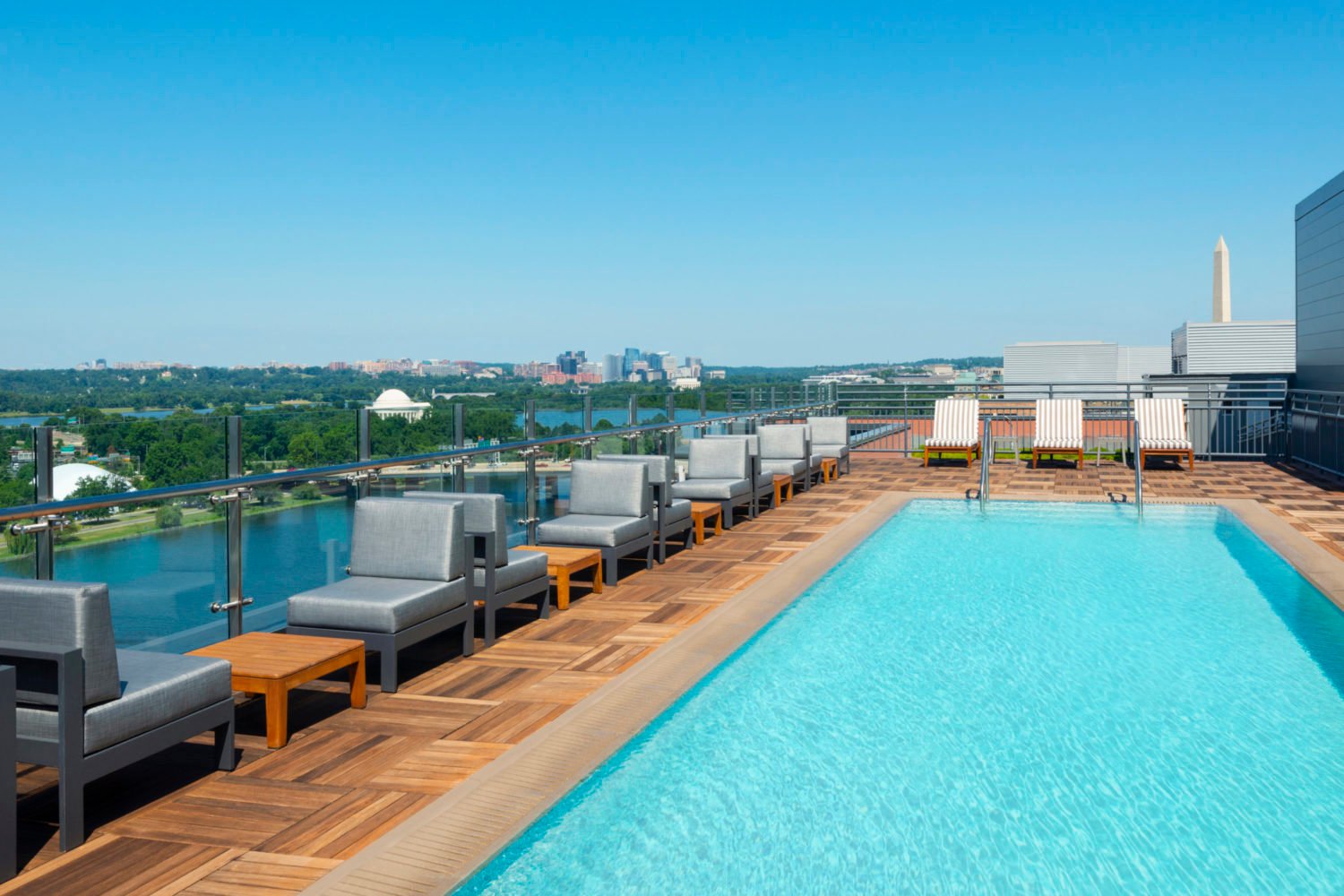
See our full Guide to the Cherry Blossoms
Festival Information | Peak Bloom | History
National Cherry Blossom Festival
The celebration of the cherry blossoms brings thousands of visitors to Washington each year. This year’s festival will take place March 27 through April 11. The following is a sampling of some of the don’t-miss events the festival has in store. For the full calendar, click here.
• Smithsonian Kite Festival
Starting at 10 AM on March 27, the Smithsonian Kite Festival features demonstrations and hands-on activities with kite-flying experts. You can also build your own kite for the handmade-kite competition, or enter the Hot Tricks competition or the Rokkaku Kite Battle, both held at the end of the day.
• Cherry Blossom Photo Safaris
Learn photography tricks from pros as you stroll along the Tidal Basin. To get the best light, tours are at sunrise and in the afternoon. Instructors teach composition, lighting, and exposure for amateur photographers. The sunrise tour starts at 6:15 AM and costs $64 to $99 a person. The afternoon session is at 3 PM and costs $59 a person. Tours are offered periodically throughout the festival.
• Target Performance Stage at Sylvan Theatre
Free Japanese cultural performances take place throughout the festival on a stage at the Washington Monument grounds. Acts include music and dance by local, national, and international performing artists.
• Cherry Blossom Soccer Tournament
Thirty-two adult coed teams compete in this seven-on-seven tournament. The prize? The Cherry Blossom Cup. Games are March 27 and 28 starting at 8 AM. They’re played at the JFK Hockey & Soccer Fields at Independence Avenue and 17 Street, Southwest.
• Lantern Lighting Ceremony
Watch as a 359-year-old stone lantern is lit in a ceremony with Japanese performing artists, Washington dignitaries, and more. The ceremony starts at 2:30 PM on April 4 at the Tidal Basin.
• National Conference of State Societies Grand Ball
On April 9, you can attend this black-tie reception and dinner at the Grand Hyatt Washington featuring the presentation of the Cherry Blossom Princesses and the selection of the Cherry Blossom Queen. There’ll also be entertainment and dancing. Tickets are $150 a person.
• Japanese Street Festival
On April 10, the annual Sakura Matsuri—or Japanese street festival—will take place along Pennsylvania Avenue between 10th and 14th streets, Northwest, and on 12th Street between Pennsylvania and Constitution avenues. Booths will include sushi and sake samples, Japanese arts and crafts, origami, and more. Dancers and taiko drummers will perform.
• Fireworks Show
The annual fireworks display will take place this year on April 3 at 8:30. The fireworks will launch from the Washington Channel, so go to East Potomac Park or the Southwest Waterfront promenade for the best viewing.
Peak Bloom Period
Each year, experts try to predict the peak blooming period of the cherry trees, defined as the time during which at least 70 percent of the blossoms will be open. This year, Rob DeFeo, chief horticulturist for the National Park Service, estimated the peak bloom period to be April 1 through 4, with the buds running their full bloom cycle between March 31 and April 11. Enthusiasts can watch the buds open at the National Cherry Blossom Festival’s Bloom Watch page.
History of the Trees
For more than 20 years in the early 20th century, cherry-tree aficionados worked hard to get the Japanese seedlings planted in US soil. Early attempts by Eliza Ruhamah Scidmore in the late 1800s failed, despite repeated appeals to officials to plant the trees in Washington.
In 1906, Dr. David Fairchild, a botanist and Department of Agriculture official, decided to take up the challenge and imported 75 trees on his own dime to test their heartiness and fitness for life in the United States. He planted them on his property in Chevy Chase and a year later declared his experiment a success. In 1908, Fairchild gave saplings to DC students to plant at their schools on Arbor Day—those were the first cherry trees in Washington.
Fast-forward four years. Scidmore and Fairchild finally generated enough momentum and support to import cherry trees to Washington. In 1912, Tokyo mayor Yukio Ozaki gave the city a gift of 3,020 cherry trees as a symbol of friendship and cultural exchange; those trees were planted around the Tidal Basin. First Lady Helen Taft and Viscountess Chinda, wife of the Japanese ambassador, ceremonially planted the first trees. In a simple ceremony with a few witnesses, Taft gave Chinda a bouquet of roses as a gesture of thanks, and out of that exchange the Cherry Blossom Festival was born. In 1935, the first official festival, sponsored by local civic groups, was held.
Thirty years later, Lady Bird Johnson accepted another 3,800 trees from Japan. Many of these were planted on the grounds of the Washington Monument.
From the 1960s through the present, horticulturists have worked hard to retain the genetic characteristics of the trees in the original gift of 1912. Together with the National Park Service and the US National Arboretum, they frequently take cuttings from the old trees to restore and plant new ones in Washington. Most recently, between 2002 and 2006, 400 trees were planted.
For more on the history of the trees, visit the National Park Service's Web site.
See our full Guide to the Cherry Blossoms

